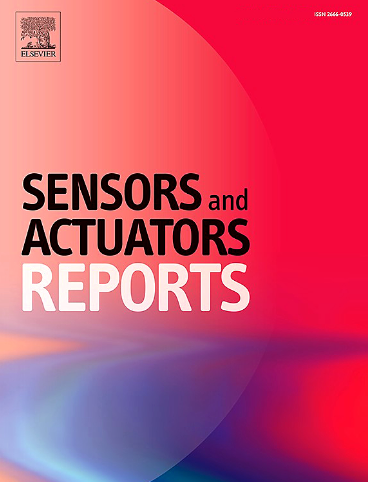The design of paper-based electroanalytical microfluidic device coupled with post-synthesized molecularly imprinted polymers (rGO/Au@Ag2S/PANI/polyacrylamide) for the detection of streptomycin
IF 7.6
Q1 BIOTECHNOLOGY & APPLIED MICROBIOLOGY
引用次数: 0
Abstract
A highly sensitive three-electrode paper-based microfluidic device has been developed for determinate of streptomycin. Ag/GQD/chitosan nano ink was used to construct reference and counter electrodes and Au@Ag2S/GQD/chitosan nano ink was used to construct working electrode. rGO/Au@Ag2S/anline nano-sheets were encapsulated with acrylamide as a functional monomer to create novel nano-sized molecular imprinted polymer (MIP) and was used for the modification of electrode working.
Paper substrate was modified for forming a hydrophobic region around the hydrophilic region on the filter paper and were suitable for the evaluation of target molecules in aqueous environment. All steps of making the MIP and non-imprinted polymer (NIP) sensors are illustrated by FE-SEM, Energy-dispersive X-ray spectroscopy (EDS), and FT-IR. CV and DPV techniques were applied for the measurement of the streptomycin. The fabricated device showed high sensitivity toward streptomycin, which was due to synergistic effects between catalytic properties, electrical conductivity of rGO/Au@Ag2S/anline /Polyacrylamide, and considerably increased numbers of imprinted sites. Using these techniques, streptomycin was determined in the linear range of 1pM to 1 μM with a limit of detection of 0.9 × 10−12 M (Ip (μA) = -2.075x + 31.575, R2= 0.9983). The device provided good cyclic stability (RSD < 0.05), high reproducibility and selectivity (RSD < 0.05 obtained from five calibration plots) with a good repeatability (for both milk and serum samples, RSD < 0.05). Finally, it should be noted that this device showed a good analytical performance for the detection of streptomycin in milk and serum samples.

基于纸张的电分析微流控装置与后合成的分子印迹聚合物(rGO/Au@Ag2S/PANI/聚丙烯酰胺)耦合用于链霉素的检测
研制了一种高灵敏度的三电极纸基微流控装置,用于链霉素的测定。采用银/GQD/壳聚糖纳米油墨构建参比电极和对电极,采用Au@Ag2S/GQD/壳聚糖纳米油墨构建工作电极。以丙烯酰胺为功能单体包裹氧化石墨烯/Au@Ag2S/苯胺纳米片,制备了新型纳米分子印迹聚合物(MIP),并用于电极工作的修饰。对纸底物进行改性,使其在滤纸上亲水区域周围形成疏水区域,适于在水环境中对目标分子进行评价。制备MIP和非印迹聚合物(NIP)传感器的所有步骤都通过FE-SEM,能谱(EDS)和FT-IR进行了说明。采用CV和DPV技术测定链霉素的含量。该装置对链霉素具有较高的敏感性,这是由于催化性能、还原氧化石墨烯/Au@Ag2S/苯胺/聚丙烯酰胺的电导率以及印迹位点数量的显著增加之间的协同作用。该方法在1 μM ~ 1 μM的线性范围内测定链霉素,检出限为0.9 × 10−12 M (Ip (μA) = -2.075x + 31.575, R2= 0.9983)。该装置具有良好的循环稳定性(RSD <;0.05),高重现性和选择性(RSD <;0.05),重复性好(对于牛奶和血清样品,RSD <;0.05)。最后,值得注意的是,该装置对牛奶和血清样品中链霉素的检测显示出良好的分析性能。
本文章由计算机程序翻译,如有差异,请以英文原文为准。
求助全文
约1分钟内获得全文
求助全文
来源期刊

Sensors and Actuators Reports
Multiple-
CiteScore
9.60
自引率
0.00%
发文量
60
审稿时长
49 days
期刊介绍:
Sensors and Actuators Reports is a peer-reviewed open access journal launched out from the Sensors and Actuators journal family. Sensors and Actuators Reports is dedicated to publishing new and original works in the field of all type of sensors and actuators, including bio-, chemical-, physical-, and nano- sensors and actuators, which demonstrates significant progress beyond the current state of the art. The journal regularly publishes original research papers, reviews, and short communications.
For research papers and short communications, the journal aims to publish the new and original work supported by experimental results and as such purely theoretical works are not accepted.
 求助内容:
求助内容: 应助结果提醒方式:
应助结果提醒方式:


